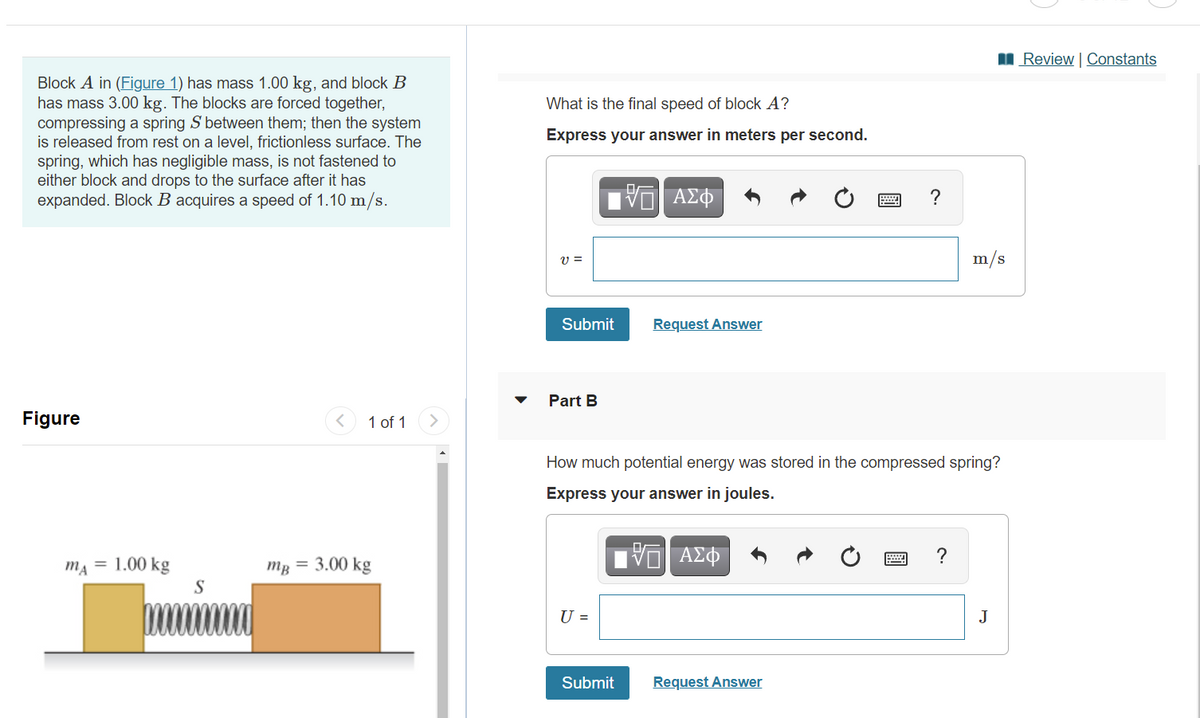Block A in (Figure 1) has mass 1.00 kg, and block B has mass 3.00 kg. The blocks are forced together, compressing a spring S between them; then the system is released from rest on a level, frictionless surface. The spring, which has negligible mass, is not fastened to either block and drons to the surface after it has What is the final speed of block A? Express your answer in meters per second.
Block A in (Figure 1) has mass 1.00 kg, and block B has mass 3.00 kg. The blocks are forced together, compressing a spring S between them; then the system is released from rest on a level, frictionless surface. The spring, which has negligible mass, is not fastened to either block and drons to the surface after it has What is the final speed of block A? Express your answer in meters per second.
Related questions
Question
6

Transcribed Image Text:II Review | Constants
Block A in (Figure 1) has mass 1.00 kg, and block B
has mass 3.00 kg. The blocks are forced together,
compressing a spring S between them; then the system
is released from rest on a level, frictionless surface. The
spring, which has negligible mass, is not fastened to
either block and drops to the surface after it has
What is the final speed of block A?
Express your answer in meters per second.
expanded. Block B acquires a speed of 1.10 m/s.
v =
m/s
Submit
Request Answer
Part B
Figure
1 of 1
How much potential energy was stored in the compressed spring?
Express your answer in joules.
ΑΣΦ
?
ma = 1.00 kg
S
mg = 3.00 kg
U =
J
Submit
Request Answer
圓
Expert Solution
This question has been solved!
Explore an expertly crafted, step-by-step solution for a thorough understanding of key concepts.
This is a popular solution!
Trending now
This is a popular solution!
Step by step
Solved in 2 steps
